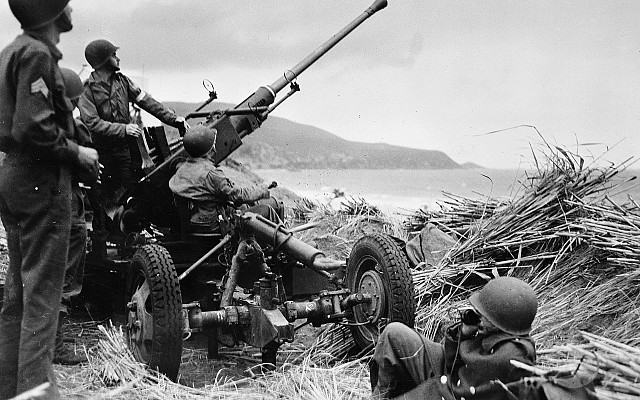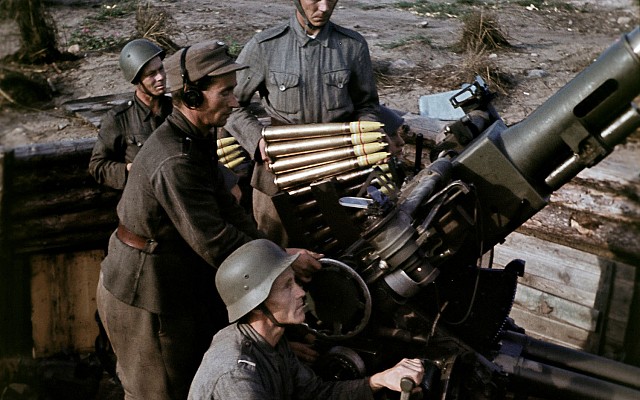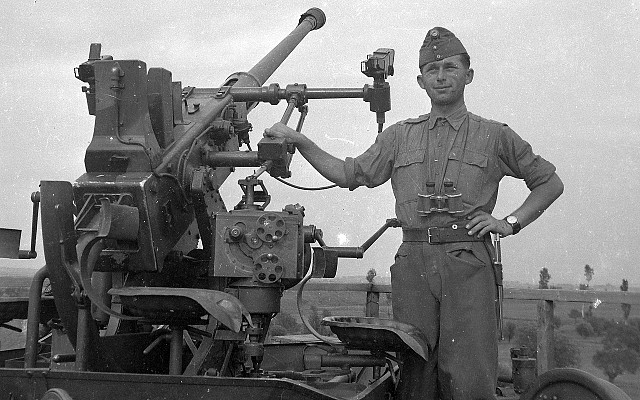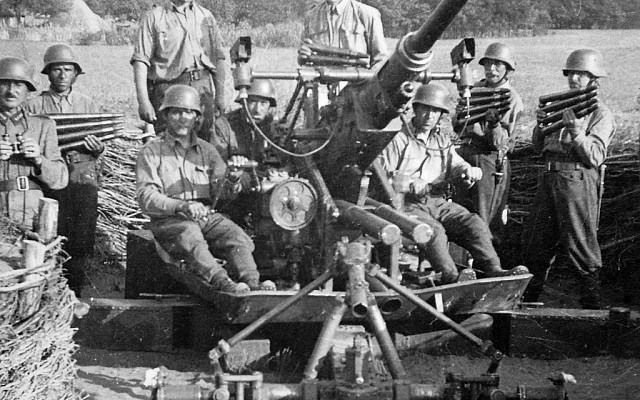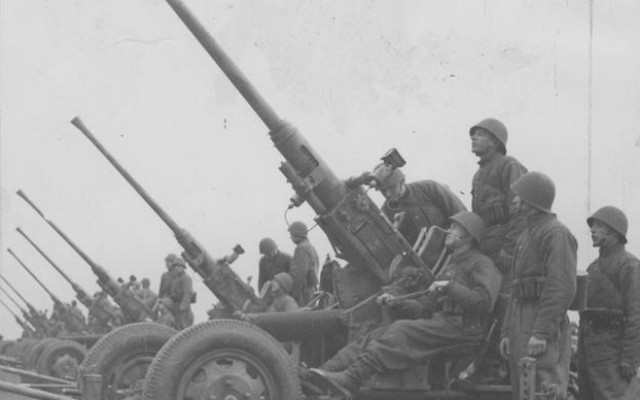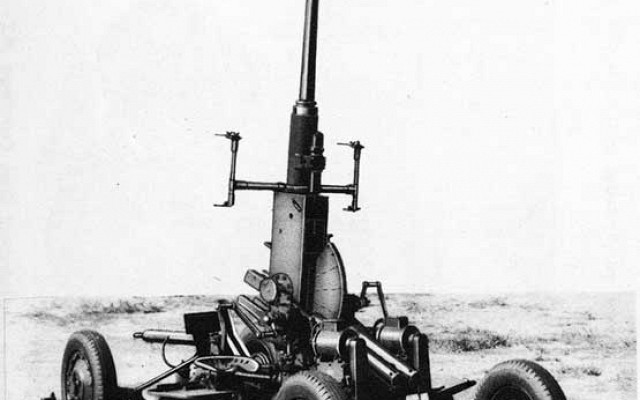Bofors L/60
40 mm Automatic Gun M1 | QF 40 mm
Overview
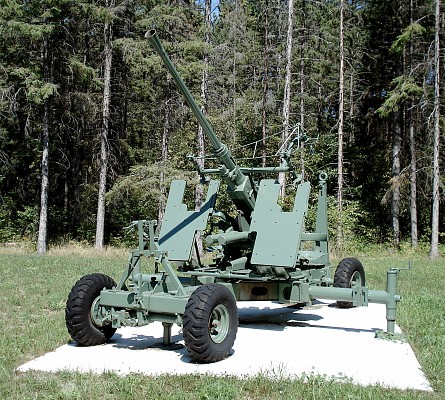
40mm Bofors L/60
40mm Bofors L/60 towed anti-aircraft gun, seen here in British 40 mm Q.F. 40 mm Mk. 1 variant with gun shields, on public display at the Base Borden Military Museum in 2006.
Source: Balcer -
© CC BY-SA 3.0
1935 - 1936 (field mount)
Greece
Norway
Poland
United States
Bofors L/56
Description
Introduction
The Bofors L/60 is pre-World War 2 era towed anti-aircraft gun of Swedish origin. Originally developed in the mid to late 1920's by Swedish company Bofors as L/43 gun for submarines. This was then adapted with a longer barrel for both field and in 1934 for naval use. This article describes the field mount.
Design
The Bofors L/60 is a towed anti-aircraft gun on a four wheel mount. There are four jacks, of which two on outriggers, to provide a stable firing platform. The gun is fitted on a open mount, with later mounts featuring a gun shield. Firing is carried out by two seated operator, plus one to three people loading the gun. There is a feed chute on top which is loaded by four round stripper clips.
Firepower
The Bofors L/60 fires a 40mm projectile that weighs about 0.9 kg from a 311mm rimmed case. Cyclic rate of fire differs on elevation angle. This is 140 rpm at horizontal and about 120 rpm at high elevation. Muzzle velocity is about 850 m/s for the most common ammunition types. Practical rate of fire was about 80 to 100 rpm. This makes the L/60 useful against subsonic aircraft, but less suitable against faster aircraft seen after World War 2. For anti-aircraft use high explosive ammunition is used. An armor piercing shell was developed for naval and land based use against surface targets. In the early days of World War 2 the Bofors L/60 was as potent in the anti-tank role as early 37mm and 40mm anti-tank guns. During World War 2 the anti-tank capability became obsolete, although it remain potent against most types of ground targets.
Fire control
The Bofors L/60 was originally fitted with reflector sights, one for each of the two gunners and with a third person operating a simple mechanical computer. In British service this was replaced by the Stiffkey sight in which the two gunner's sights are adjusted for lead by a third operator adjusting the trapeze that connects to the sights. Various types of external directors were developed during World War 2, mostly for naval use. Post World War 2 the use of fire control radar became more widespread. Several nations employed systems such as the Super Fledermaus with modified Bofors L/60 guns.
Mobility
A medium tactical truck is most often used to tow the Bofors L/60. This will also carry the crew and ammunition. During World War 2 several self-propelled truck mounts were built, such as the Morris C9/B. Self-propelled variants on tracked chassis include the Landsverk L-62 Anti, 40M Nimrod, Crusader AA Mk I with a single gun. The American M19 and M42 Duster feature a double gun mount.
Users
The Bofors L/60 was an export success and was exported to various nations before World War 2, including license production abroad. During World War 2 vast quantities were produced, mainly in the United States. The L/60 was predominantly used Allied forces, often in double and quadruple naval mounts alongside field mounts. Various Axis forces employed the Bofors either acquired earlier or using captured examples. After World War 2 the Bofors L/70 was introduced, a more performant design. The Bofors L/60 was available in vast quantities and remained in use around the globe until the 1980's, with numbers having dwindled since.
Variants
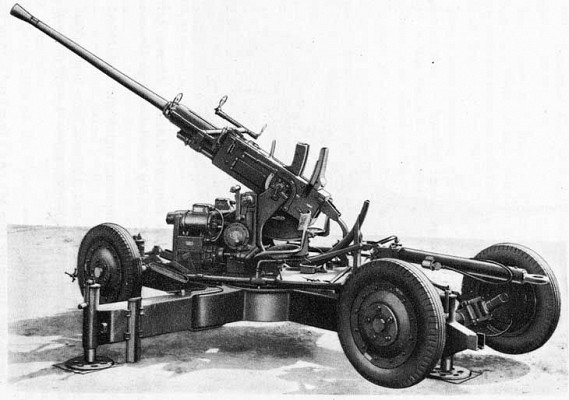
40mm Bofors L/60
40mm Bofors L/60 towed anti-aircraft gun. Photo from a technical manual depicting the 40-mm Automatic Anti-Aircraft Gun M1 on 40-mm Anti-aircraft Gun Carriage M2A1 in firing position.
Source: US Army -
© Public domain
Nomenclature
Details
Application
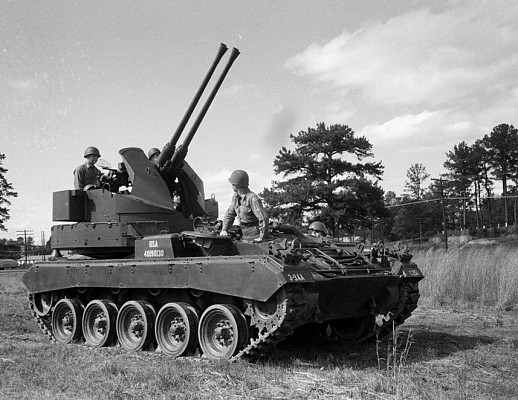
M19 MGMC
Self-propelled anti-aircraft gun based on the chassis of the M24 Chaffee light tank.
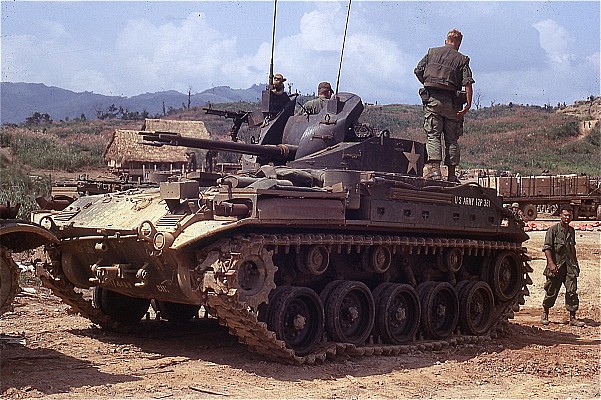
M42 Duster
Self-propelled anti-aircraft gun based on the chassis of the M41 Walker Bulldog light tank.
Media
Related articles

Bofors L/70
Post World War 2 updated design. Features a more powerful 40mm projectile that is fired from a longer cannon. Used as towed gun, in vehicle mounts and in various naval mounts.
